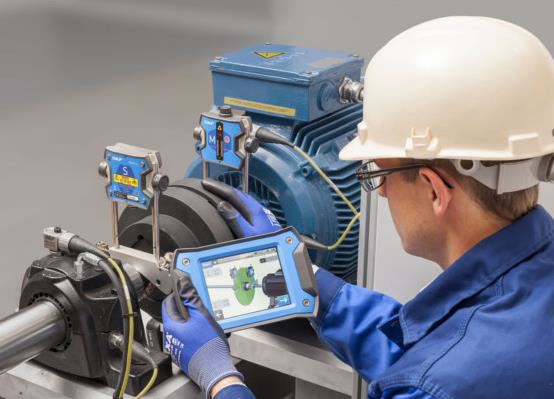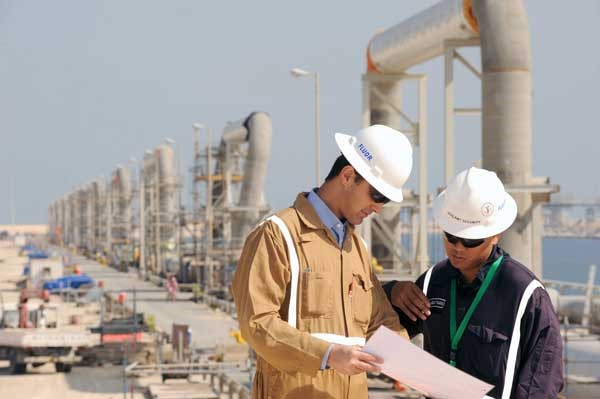COURSE OVERVIEW
RE0190 : Practical Machinery Vibration Monitoring, Analysis & Predictive Maintenance: Vibration Techniques

OVERVIEW
| COURSE TITLE | : | RE0190 : Practical Machinery Vibration Monitoring, Analysis & Predictive Maintenance: Vibration Techniques |
| COURSE DATE | : | Aug 03 - Aug 07 2025 |
| DURATION | : | 5 Days |
| INSTRUCTOR | : | Mr. Mohamed Refaat |
| VENUE | : | Al Khobar, KSA |
| COURSE FEE | : | $ 5500 |
| Request For Course Outline | ||
Course Description
This practical and highly-interactive course includes practical sessions and exercises. Theory learnt will be applied using our state-of-the art simulators.
Condition monitoring has evolved as a significant opportunity to increase profits within a wide variety of industries. Vibration Analysis is one of the most powerful condition based maintenance technologies, and the cornerstone of many predictive maintenance programs. It is also widely utilized for troubleshooting and fault diagnosis of machinery and structures. In recent years, much emphasis has been given to on-line or permanently installed vibration monitoring for machinery that is inaccessible, critical to process, and/or very expensive.
The future advancement of equipment condition monitoring technologies is intrinsically tied to the application and development of on-line or permanently installed systems. As the advantages of asset management and reliability strategies become widely accepted and aggressively implemented, significant emphasis is being placed on equipment condition monitoring. In fact, the historic barrier between production and maintenance will soon fall victim to the understanding that equipment condition data is as important as process parameters, and significantly influences production, quality, safety, and profitability.
For many industrial facilities, on-line vibration monitoring systems are used as machinery protection systems, and therefore installed only on critical equipment. The objective is to eliminate process downtime through equipment that is 100% available and reliable. At the same plant, there may also be monitoring of general purpose machinery using portable instruments. The objective of this program is to reduce maintenance expense through early detection of equipment and component defects. As on-line systems become readily available and accepted, walk around monitoring programs are improved using permanently installed sensors and hardware, typically installed at inaccessible or hazardous locations.
This course is designed to provide a practical overview of system components, installation considerations, and benefits of Vibration Monitoring. Key points and an innovative approach will be explained by discussing several recent installations. The course will provide a detailed examination of the detection, location and diagnosis of faults in rotating and reciprocating machinery using vibration analysis. It will cover the acquisition and processing of vibration signals followed by a discussion of machinery fault diagnosis using vibration analysis. The course is concluded by a review of the other techniques of predictive maintenance such as oil and particle analysis, acoustic emission and infrared thermography with an introduction to automated machine condition monitoring. The latest approaches and equipment used together with current research techniques in vibration analysis are also highlighted in the course. The lessons will be supplemented with case studies illustrating the practical aspects of vibration analysis and monitoring on a diverse range of applications.
link to course overview PDF
Condition monitoring has evolved as a significant opportunity to increase profits within a wide variety of industries. Vibration Analysis is one of the most powerful condition based maintenance technologies, and the cornerstone of many predictive maintenance programs. It is also widely utilized for troubleshooting and fault diagnosis of machinery and structures. In recent years, much emphasis has been given to on-line or permanently installed vibration monitoring for machinery that is inaccessible, critical to process, and/or very expensive.
The future advancement of equipment condition monitoring technologies is intrinsically tied to the application and development of on-line or permanently installed systems. As the advantages of asset management and reliability strategies become widely accepted and aggressively implemented, significant emphasis is being placed on equipment condition monitoring. In fact, the historic barrier between production and maintenance will soon fall victim to the understanding that equipment condition data is as important as process parameters, and significantly influences production, quality, safety, and profitability.
For many industrial facilities, on-line vibration monitoring systems are used as machinery protection systems, and therefore installed only on critical equipment. The objective is to eliminate process downtime through equipment that is 100% available and reliable. At the same plant, there may also be monitoring of general purpose machinery using portable instruments. The objective of this program is to reduce maintenance expense through early detection of equipment and component defects. As on-line systems become readily available and accepted, walk around monitoring programs are improved using permanently installed sensors and hardware, typically installed at inaccessible or hazardous locations.
This course is designed to provide a practical overview of system components, installation considerations, and benefits of Vibration Monitoring. Key points and an innovative approach will be explained by discussing several recent installations. The course will provide a detailed examination of the detection, location and diagnosis of faults in rotating and reciprocating machinery using vibration analysis. It will cover the acquisition and processing of vibration signals followed by a discussion of machinery fault diagnosis using vibration analysis. The course is concluded by a review of the other techniques of predictive maintenance such as oil and particle analysis, acoustic emission and infrared thermography with an introduction to automated machine condition monitoring. The latest approaches and equipment used together with current research techniques in vibration analysis are also highlighted in the course. The lessons will be supplemented with case studies illustrating the practical aspects of vibration analysis and monitoring on a diverse range of applications.
TRAINING METHODOLOGY
This interactive training course includes the following training methodologies:
LecturesPractical Workshops & Work Presentations
Hands-on Practical Exercises & Case Studies
Simulators (Hardware & Software) & Videos
In an unlikely event, the course instructor may modify the above training methodology for technical reasons.
VIRTUAL TRAINING (IF APPLICABLE)
If this course is delivered online as a Virtual Training, the following limitations will be applicable:
| Certificates | : | Only soft copy certificates will be issued |
| Training Materials | : | Only soft copy materials will be issued |
| Training Methodology | : | 80% theory, 20% practical |
| Training Program | : | 4 hours per day, from 09:30 to 13:30 |
RELATED COURSES
.jpg)
RE0200(EC2) : Maintenance Management CMMS KPI Planning Budgeting and Cost Reports
- Date: Jan 11 - Jan 15 / 3 Days
- Location: Dubai, UAE
- Course Details Register

RE0977 : Process Plant Shutdown, Turnaround, Troubleshooting, Critical Activities, Isolation, Start Up & Commissioning
- Date: Jan 04 - Jan 08 / 3 Days
- Location: Istanbul, Turkey
- Course Details Register

RE0212 : Excellence in Maintenance & Reliability Management
- Date: Jan 11 - Jan 15 / 3 Days
- Location: Cairo, Egypt
- Course Details Register

RE0956 : Maintain Static Mechanical Equipment
- Date: Jan 04 - Jan 08 / 3 Days
- Location: Istanbul, Turkey
- Course Details Register
